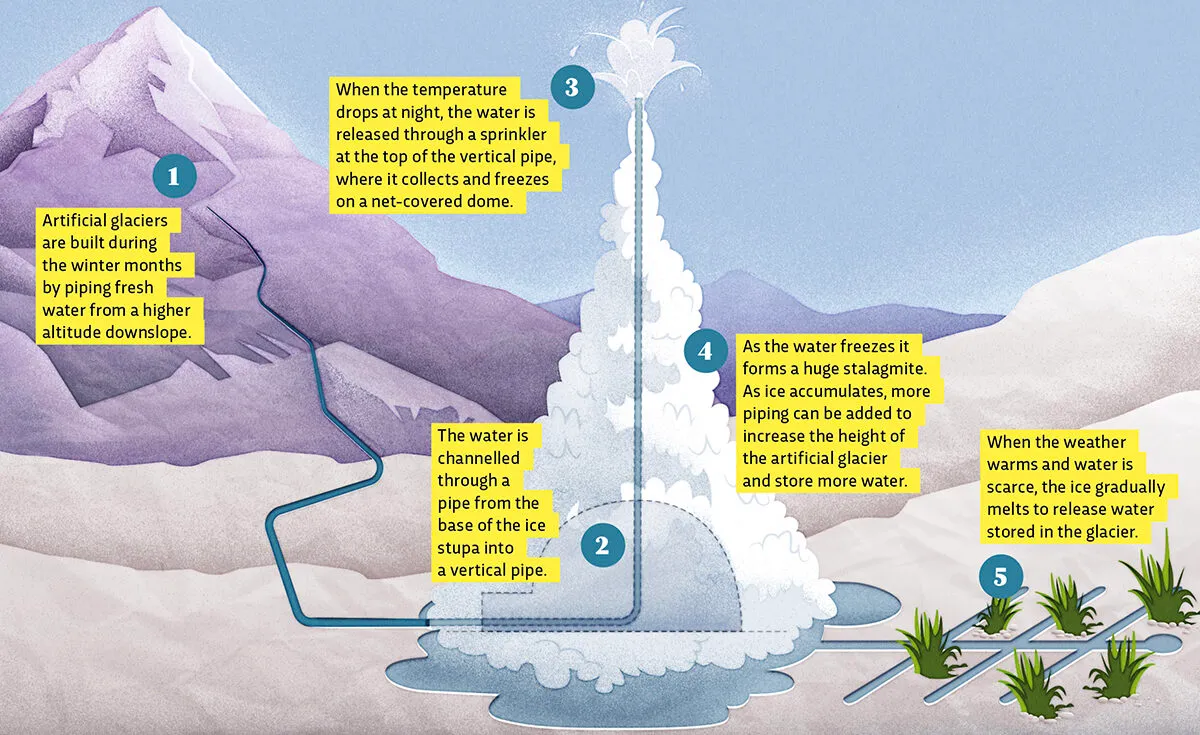Artificial glaciers, or ice stupas, are made using a simple irrigation system designed to store fresh water for use during arid summer months. Ice stupas have provided a lifeline for farmers during the spring planting season in Ladakh, a high mountain-desert region on the edge of the Himalayas. The region has a population of almost 300,000 people, but on average only receives around 10 centimetres of precipitation every year - that's just a fraction more than the Sahara Desert.
Agriculture in these cold desert regions is critical to survival, and crops can only be cultivated over a few months each year. Due to climate change, this already short window is rapidly declining. Retreating – or disappearing – glaciers have provided climate scientists with some of the most alarming evidence that the Earth is warming.
According to a study published in the journal Cryosphere, the Earth lost more than 1.2 trillion tonnes of ice in the 2010s. This is a significant increase from the 760 billion tonnes lost per year in the previous decade, and researchers found that between 1994 and 2017, the planet lost a whopping 28 trillion tonnes of ice. Natural glaciers are crucial to life in these arid mountain regions, as they provide an essential freshwater source.
So engineers have come up with an innovative solution; to freeze, and store winter fresh water in huge, towering structures. This water can then be accessed throughout the year and can help to sustain the communities that live in these regions. The technique was first developed by engineer Sonam Wangchuk in 2013.
Researchers from the Cryosphere and Climate Change research group at the University of Aberdeen have been working with Indian universities, locals from the Ladakh region and The Ice Stupa Project to help address the situation. In particular, they are looking at ways to avoid water freezing in the pipes, as well as gaining a better understanding of the local micro-climates.
How are artificial glaciers made?

Stage 1
Artificial glaciers are built during the winter months by piping freshwater from a higher altitude downslope using polyethene tubing.
Stage 2
The water is channelled through a pipe from the base of the ice stupa into a vertical pipe made of galvanised iron.
Stage 3
When the temperature drops at night, this freshwater is pumped through a sprinkler at the top of this vertical pipe. With winter temperatures in the Ladakh region as low as -30°C, the water freezes onto a purpose-built structure made of wood and steel.
Stage 4
As the water freezes, the result is a huge stalagmite-type structure. As the ice accumulates, more piping can be added to increase the height of the artificial glacier and store higher volumes of water.
Stage 5
When the weather warms and water is scarce, the ice gradually melts to release this freshwater stored in the glacier. This provides locals with an invaluable source of water for irrigation in that critical window early on in the planting season.
Read more about ice: